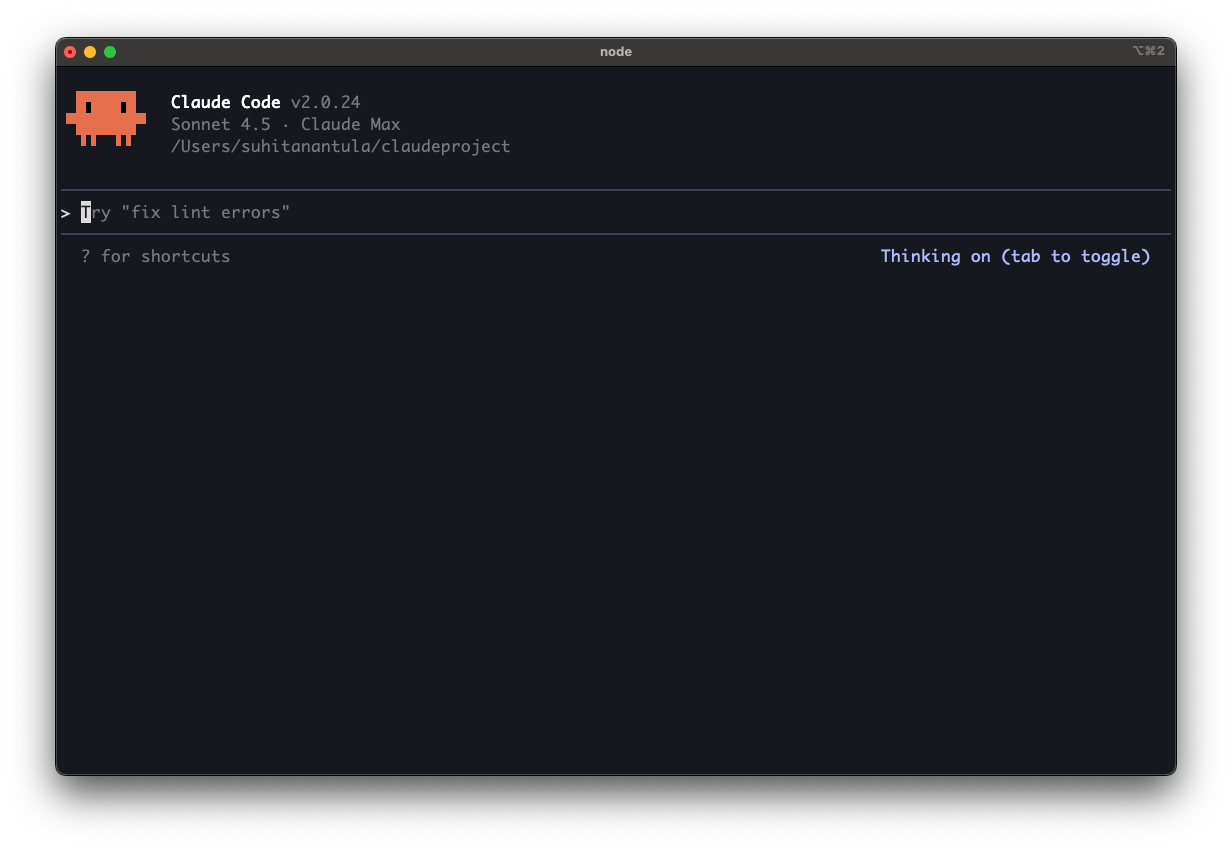Why Claude Code is for Everyone -- The Terminal as Strategic Workspace
When Claude Code launched, I was intrigued but uncertain. “It lives in the terminal (only for developers), it’s called Claude Code. What else?” The positioning suggested it was for coders, not strategic thinkers like me.
Listening to Nate Jones changed everything. He described this as “the most powerful implementation of Claude” - not just about code, but capable of everything Claude can do PLUS file access, agentic approaches, and strategic thinking.
This reframed it from “developer tool” to “strategic intelligence platform.”
As a non-coder, I took the plunge:
Opened Terminal on my Mac (unfamiliar territory)
Watched YouTube tutorials for basic navigation
Installed Claude Code despite the learning curve
“It felt different. More powerful than chat. A new way of working with AI.”
Despite the complexity and unfamiliar interface, there was an undeniable pull. The terminal environment created a different kind of interaction - more focused, more powerful, more direct than the chat interface.
After a few exploration sessions, the breakthrough happened. I took my Lines, Loops, and Vibes framework from The Helix Moment book and asked: “Can I build agents that think and work like that?”
Between family time and work commitments, I created three agents that mimic the three rhythms:
Lines Agent: Structure, planning, predictability thinking
Loops Agent: Iteration, learning, adaptation thinking
Vibes Agent: Resonance, timing, emergence thinking
“They’re not perfect and it still takes time to get them to start working well but oh boy! do they work.”
This was my co-intelligence breakthrough - witnessing AI agents that could embody different cognitive rhythms and work styles that mirror human strategic thinking patterns.
The Strategic Intelligence Platform Emerges
Suddenly I saw a new way of working:
Thinking: Agents that embody different cognitive approaches
Writing: File-based content creation and editing
Research: PDF reading, image analysis, markdown processing
Integration: Internet fetching + local file synthesis
Analysis: Python coding for data processing and insights
Key Insights
1. Terminal ≠ Developer-Only: The command line environment creates focused, powerful interaction modes
2. File Access = Institutional Memory: Unlike chat sessions, file-based work creates persistent intelligence
3. Agent Architecture = Cognitive Diversity: Multiple thinking styles can be encoded and deployed
4. Strategic Tools ≠ Business Software: Sometimes the most powerful strategic tools come from unexpected places
Implications for Co-Intelligent Organisations
This discovery demonstrates how non-obvious tools can become strategic intelligence platforms when approached with the right framework. The terminal - once the domain of developers - becomes a workspace for strategic thinking and organisational intelligence.
Suhit is the Author of The Helix Moment where he explores how strategy and design changes in the co-intelligence age. He enables organisations to be more co-intelligent through capability building, strategy and new ways of working. (www.suhitanantula.com)


